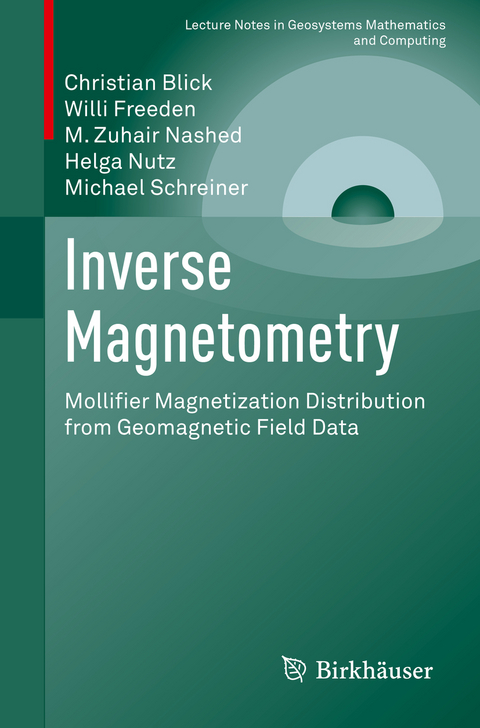
Inverse Magnetometry
Mollifier Magnetization Distribution from Geomagnetic Field Data
Seiten
2021
|
1st ed. 2021
Springer International Publishing (Verlag)
978-3-030-79507-8 (ISBN)
Springer International Publishing (Verlag)
978-3-030-79507-8 (ISBN)
This monograph presents the geoscientific context arising in decorrelative geomagnetic exploration. First, an insight into the current state of research is given by reducing magnetometry to mathematically accessible, and thus calculable, decorrelated models. In this way, various questions and problems of magnetometry are made available to a broad scientific audience and the exploration industry. New stimuli are given, and innovative ways of modeling geologic strata by mollifier magnetometric techniques are shown.
Potential data sets primarily of terrestrial origin constitute the main data basis in the book. For deep geology, the geomathematical decorrelation methods are designed in such a way that depth information (e.g., in boreholes) may be canonically entered.
Overall, this book provides pioneering and ground-breaking innovative mathematical knowledge as a transfer methodology from the "reality space" of magnetometric measurements into the "virtual space" of mathematical-numerical modeling structures and mollifier solutions with novel geological application areas. It pursues a double goal: On the one hand, it represents a geoscientific set of rules for today's geoengineering, interested in the application of innovative modelling and simulation techniques to promising data sets and structures occurring in geomagnetics. On the other hand, the book serves as a collection of current material in Applied Mathematics to offer alternative methodologies in the theory of inverse problems.
Potential data sets primarily of terrestrial origin constitute the main data basis in the book. For deep geology, the geomathematical decorrelation methods are designed in such a way that depth information (e.g., in boreholes) may be canonically entered.
Overall, this book provides pioneering and ground-breaking innovative mathematical knowledge as a transfer methodology from the "reality space" of magnetometric measurements into the "virtual space" of mathematical-numerical modeling structures and mollifier solutions with novel geological application areas. It pursues a double goal: On the one hand, it represents a geoscientific set of rules for today's geoengineering, interested in the application of innovative modelling and simulation techniques to promising data sets and structures occurring in geomagnetics. On the other hand, the book serves as a collection of current material in Applied Mathematics to offer alternative methodologies in the theory of inverse problems.
Introductory Remarks.- Basics of Magnetic Field Theory and Magnetization.- Dipole Potential Based Magnetometry.- Inverse Magnetometry.- Multi-Scale Inverse Mollifier Magnetometry.- Test Demonstrations.- Concluding Remarks.
| Erscheinungsdatum | 11.09.2021 |
|---|---|
| Reihe/Serie | Lecture Notes in Geosystems Mathematics and Computing |
| Zusatzinfo | XII, 114 p. 28 illus., 22 illus. in color. |
| Verlagsort | Cham |
| Sprache | englisch |
| Maße | 155 x 235 mm |
| Gewicht | 207 g |
| Themenwelt | Mathematik / Informatik ► Mathematik ► Analysis |
| Mathematik / Informatik ► Mathematik ► Wahrscheinlichkeit / Kombinatorik | |
| Schlagworte | Dipole-Based Magnetization • Inverse Magnetometry • Magnetization Distribution Field • Mollifier Regularization Technique • Multiscale Mollifier Spline and Wavelet Inversion |
| ISBN-10 | 3-030-79507-1 / 3030795071 |
| ISBN-13 | 978-3-030-79507-8 / 9783030795078 |
| Zustand | Neuware |
| Haben Sie eine Frage zum Produkt? |
Mehr entdecken
aus dem Bereich
aus dem Bereich
Band 5: Hydraulik, Stromfadentheorie, Wellentheorie, Gasdynamik
Buch | Softcover (2024)
De Gruyter Oldenbourg (Verlag)
59,95 €


